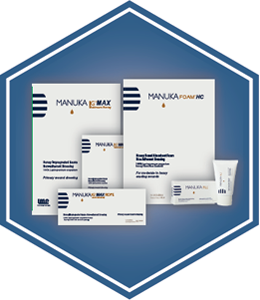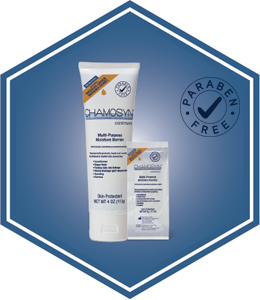
THE IMPORTANCE OF THE CMH MARK

The CMH mark provides assurance to healthcare professionals that the Manuka honey products they employ in wound care applications meet a set of stringent and consistent requirements for purity and composition.

What makes Manuka honey the most valued honey in modern wound care is its content of non-peroxide elements not found in other honeys – specifically methylglyoxal (MG) and dihydroxyacetone (DHA) – that defines the unique chemical composition of Manuka honey.

The utilization of the CMH mark completely differentiates CMH medical-grade Manuka honey from competitive wound care products by setting a standard for medical-grade quality.
 Overview
OverviewWound care products containing certified medical-grade Manuka honey display the CMH® emblem to confirm those products meet a distinct, independently verified standard that assures caregivers of a level of purity and chemical composition that may not exist in competitive wound care products containing Manuka honey.
 Certification Testing
Certification TestingBefore processing by LMP, the Manuka honey is subjected to extensive testing by Minerva Scientific, an independent UK based laboratory, conforming to ISO 17025 standards.
The tests used to assure wound specialists of CMH marked medical-grade Manuka honey include those required to guarantee authenticity and also include the measurement of methylglyoxal (MG) and dihydroxyacetone (DHA), a precursor to MG content, and product sterility.
 Definition of Manuka Honey
Definition of Manuka HoneyAuthentic Manuka honey is harvested from hives dedicated to bees that gather nectar from the flower of the Manuka bush (Leptospermum scoparium) native only to New Zealand. The characteristics of Manuka honey have been well defined by Professor Peter Molan (University of Waikato) and others. Its use in medical applications is also well documented in various reports and studies.
All types of honey contain some level of peroxide, the strength of which is sometimes measured and referred to as peroxide activity (PA).
While Manuka honey does contain peroxide, what has made it the most valued honey in modern wound care is its content of non-peroxide elements not found in other honeys – specifically methylglyoxal (MG) and dihydroxyacetone (DHA) – that defines the unique chemical composition of Manuka honey.
 Definition of Certified Medical-grade Manuka honey (CMH)
Definition of Certified Medical-grade Manuka honey (CMH)Due to the lack of facts and information covering test data and standards verifying the purity and chemical composition of the Manuka honey used in a number of products in the marketplace, LMP has established a defined certification process, designated by the CMH mark.
The CMH mark provides assurance to healthcare professionals that the LMP products they employ in wound care applications have met a set of stringent and consistent requirements for purity and composition.
The CMH mark completely differentiates LMP medical-grade Manuka honey from competitive wound care products by setting a standard for medical-grade quality.
To define the standard for medical-grade Manuka honey, LMP established a distinct set of process methods and controls. The honey is also referred to an independent laboratory to verify authenticity.
The CMH mark is further backed by LMP’s compliance with well-established GMP standards.
 About DHA and MG
About DHA and MGOnly in the last few years have scientists (T. Henle, et al) firmly established Manuka honey from the Leptospermum scoparium bush contains high levels of the compound methylglyoxal (MG).
Dihydroxyacetone (DHA) is found in the nectar from the Leptospermum scoparium bush and, as a precursor, is entirely responsible for MG formation in Manuka honey.
MG and its precursor DHA have been proven to be those elements that most significantly differentiate Manuka honey’s unique properties from those of other honeys.
Because the amount of MG is formed by the DHA present in Manuka honey, the DHA level must be of sufficient quantity to maintain and sustain the characteristic levels of MG over the shelf life of a product.
 Process Protocols
Process ProtocolsSpecific process protocols include controlled storage, fine filtration, homogenization and post production sterilization.
{ CLICK HERE } to view the complete report on CMH that includes specific information regarding control and testing of the product.

Links Medical Products® Manuka Honey Wound Care
LMP’s full range of medical care products containing Certified Manuka Honey (CMH®) is now available worldwide from reputable medical product suppliers.
Chamosyn®
Multi-Purpose Moisture Barrier
Chamosyn paraben free skin protection ointment offers an advanced formulation of ingredients including Aloe, Chamomile and Certified Manuka Honey (CMH®) to help temporarily protect, soothe and heal irritated or chafed skin.
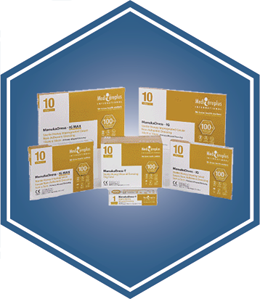
MediCareplus
International
MediCareplus provides healthcare products,
including Certified Manuka Honey (CMH®) wound care dressings, to professionals
in Europe and elsewhere with an extensive range of CE marked products.

Henry Schein®
Manuka Honey Gel
The Henry Schein brand of Manuka honey gel contains Certified Manuka Honey (CMH®) and is made available to veterinary professionals in Europe.
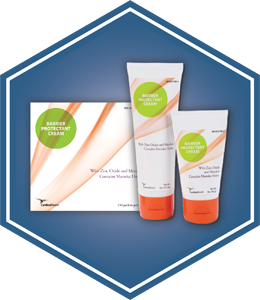
Cardinal Health™
Barrier Protectant Cream
Cardinal Health’s private brand of barrier protectant cream includes Certified Manuka Honey (CMH®) to help those suffering from the debilitating effects of incontinence and other skin irritations.
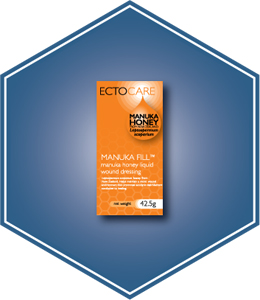
Ectocare®
Manuka Honey Wound Dressing
Ectocare’s private brand of Manuka honey wound gel contains Certified Manuka Honey (CMH®) and is available to wound care professionals in Australia and New Zealand.
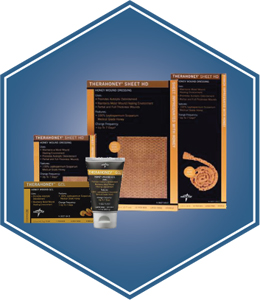
Medline® Industries Therahoney™ Wound Dressings
Medline’s full range of Therahoney sterile wound dressings includes Certified Manuka Honey (CMH®) and is available to wound care professionals in the USA, Canada and Latin America.

